Let’s Build the Loco

Every country has their own public transportations, but the most famous is trains. Trains are much faster than other transportation and come in all shapes and sizes. They manufacture in huge workshops. Train manufacture has been developed from vintage locomotives (Steam and Diesel engines) to modern electric locomotives. In this project I choose the theme of Industrial, Innovation and Infrastructure. In particulary manufacture steam & diesel engines. Since train manufacture takes a lot of time to build and to ship it to the customer, therefore I gave innovation to using AI and robots, in addition, each customer will get the product as ordered, the train is operated without a driver and can stop at each station automatically, and the engine could run safely as well. In this project, I use face detection and QR code scanner extensions (face scan and QR code) to identify customers. This project provides options for the customer to choose the engine’s type and speed using the speed variable furthermore, the customer could customize the engine’s color using the change color block and speed. In order to maintain safety, I use the max variable to give a warning when the speed reaches over what it should be, then the engine will stop automatically. Along with software, this project uses Quarky hardware and code. I used the Quarky set and the code itself, to show how the Robot assembles the engine’s parts as well as to show that the engine can run as programmed
CHICKGUARD – Smart Chicken Fa
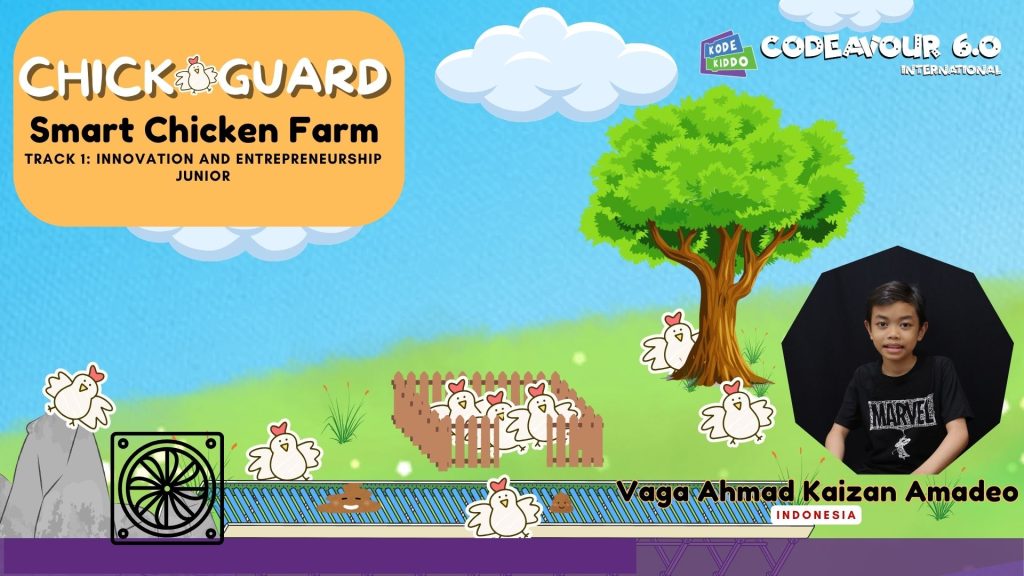
There are several SDGs associated with this project:
1. SDG 12: Responsible Consumption and Production: By optimizing resource use and reducing waste
2. SDG 13: Climate Action: reducing the carbon footprint associated with poultry farming by increasing efficiency, improving health, and preventing disease outbreaks.
3. SDG 15: Life on Land: This project is useful for improving chicken health, minimizing stress, so that it can increase chicken meat or egg production
The project offers improvING efficiency and productivity in chicken farming.
1. Automatic Air Circulation Regulation:
The fan will operate automatically when the temperature inside the cage exceeds the specified threshold (28o C), to lower temperature in the cage, reducing the levels of Carbondioxide and Ammonia in the cage, helping to maintain the comfort of the chickens and prevent stress.
2. Automatic Cage Cleaning:
A conveyor designed to automatically clean chicken manure (poop). This reduces the workload of farmers and ensures that the cage is kept clean.
3. Egg Collection Using Gravity:
The egg collection system is not fully automated, but is designed with a cage slope so that eggs can roll into the container. This makes it easier for officers to collect eggs without the need for additional tools.
USP= Chickguard is more affordable and easy to implement (especially for small farmer) compared to other market solutions, and integrates two important functions (temperature control and cleaning) in one simple system.
Safecrib: The Smart Baby Monitor
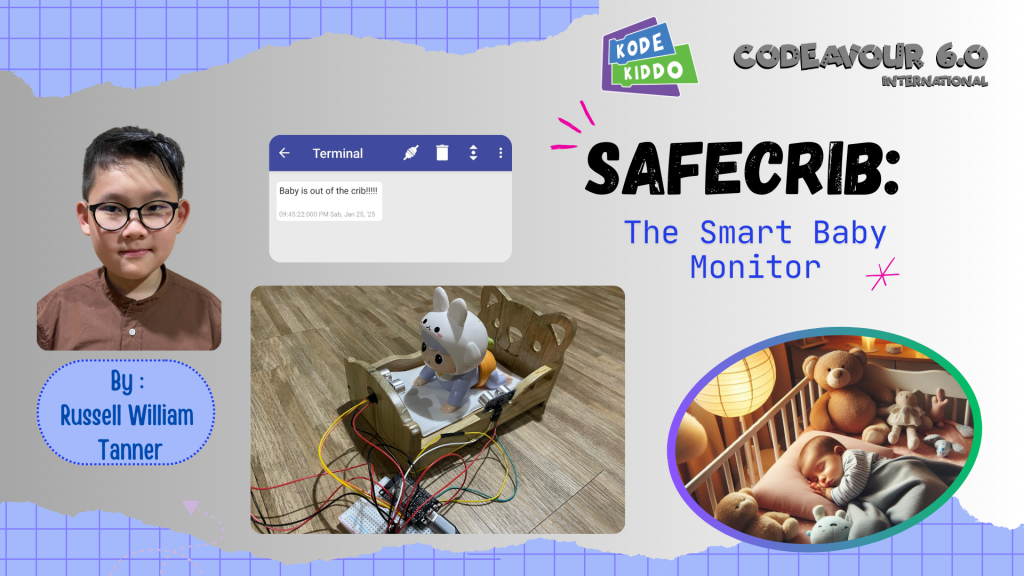
Many parents sleep in different rooms from their babies, and sometimes babies can get out of their crib without anyone noticing. This can be really dangerous because babies might fall or get hurt. In fact, more than 5,000 babies are hurt every year from falling out of cribs!
That’s why I wanted to create a solution that helps parents know if their baby is still in the crib. And that’s what I made!
I made a system that uses ultrasonic sensors to detect if the baby is in the crib or not. The sensors send data to ESP32 microcontroller, and the microcontroller then sends an alert to the phone. I use dabble as software for the phone. The alert will be sent to the terminal in dabble software.
When the baby gets out of the crib, the sensors detect it and send an alert to the phone. The phone shows whether the baby is still in the crib or not. This can help parents know if their baby is safe, even if they’re in a different room
My project can help parents sleep better and feel safer, knowing that if somethipens with their baby, they will get an alert right away. This could prevent accidents and make sure babies are safe in their cribs
OPENMON
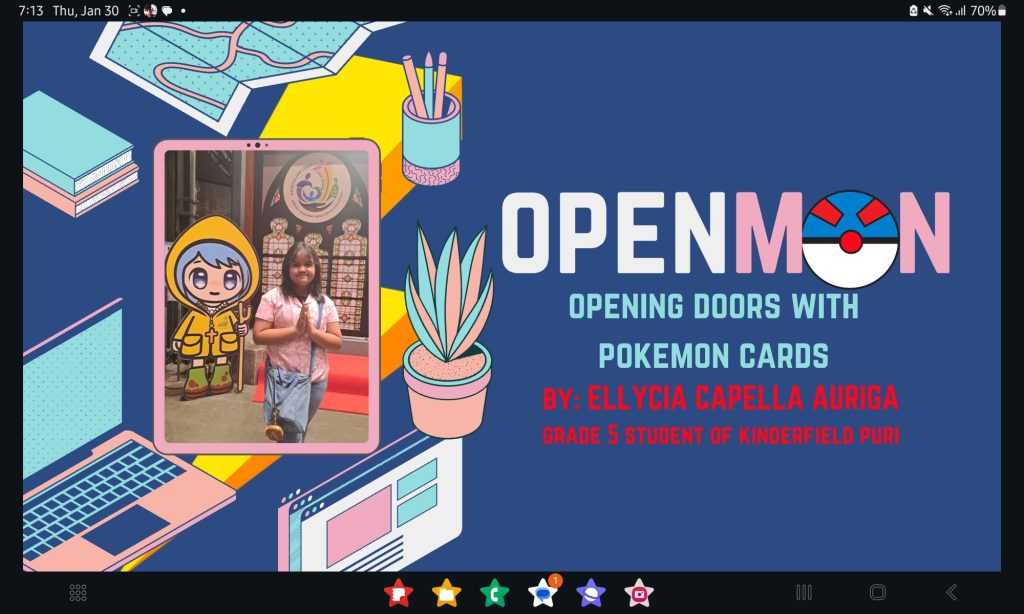
OpenMon is an innovative machine created by Ellycia Capella Auriga, designed to help individuals lock doors using Pokémon cards. This unique device blends the worlds of technology and fandom by incorporating Pokémon cards, which are typically used for playing games, into a practical everyday tool. The concept behind OpenMon is simple yet effective: a user can scan a Pokémon card using the device, and depending on the specific card chosen, it triggers the mechanism to either lock or unlock a door.
The technology behind OpenMon is an ingenious combination of card recognition software and lock control systems. The machine reads the unique details of each Pokémon card, and when it recognizes a valid card, it sends a signal to the lock, activating or deactivating the locking mechanism. The choice of Pokémon cards adds an element of personalization, as users can select cards that hold sentimental or practical value.
OpenMon not only provides a fun and novel way to secure spaces but also encourages creativitycollection among Pokémon enthusiasts. It blends a childhood hobby with modern security technology, making it both a functional tool and a conversation starter. With its innovative approach, OpenMon represents the merging of pop culture with everyday utilities, offering an engaging solution to a basic yet essential need, which is; door security
ECAIA II

ECAIA II stands for everyone and environment caring AI Assistant. Consists of hardware in the form of an automatic waste sorting arduino that can sort organic, inorganic and metal waste, in a separate trash can. By using metal sensors, and humidity sensors and servo motors.
When one of the trash cans is full, there is an IoT that can prompt users to throw it away, with auto call and messaging.
Then the ECAIA software can calculate the amount of daily waste that goes into the trash can, even that which has been sorted, and then analyze each of these wastes and provide suggestions for a better lifestyle for its users. For example, giving suggestions to use reusable containers, or reducing organic waste.
There is also a feature that can detect the type of plastic waste, and provide information related to the plastic. Such as the type of plastic, recycling time and impact on the environment, what can be recycled.
There is a DIY your trash feature that can identify trash and provide ideas for crafts that can be made from the trash
There is also a feature that can detect air quality, users can take pictures of the sky, then the air quality, pollutant particles in it, AQI levels, and health problems that may arise can be detected.
In an emergency air pollution situation, ECAIA can automatically call your friends and relatives to tell them the air conditions in your place, in the hope of helping you.
ECAIA is a solution for waste management at home and helps you find out the air quality in your area
Smart Waste Seperator

This innovative project centers around the creation of an automated trash receptacle that not only simplifies waste disposal but also educates the community about the importance of waste segregation. This sophisticated trash can is designed to open automatically based on the category of waste detected by its camera system. The advanced object recognition technology embedded within allows the receptacle to ‘see’ the type of waste being discarded, whether it’s organic, inorganic, or other identifiable waste categories.
The heart of this device is the Arduino, a microcontroller serving as the brain of this smart trash can. The Arduino receives information from the camera via the Pictoblox program, which acts as a bridge between the hardware and software components. Pictoblox, with its user-friendly interface, enables us to program the Arduino to respond appropriately to the type of waste detected.
The camera, acting as the eye of the receptacle, captures images of the waste about to be discarded. This image is then processed by Pictoblox to identify the waste category. Once the type is determined, Pictoblox sends a signal to the Arduino to activate a servo motor connected to the appropriate compartment lid. This servo motor then opens the lid corresponding to the detected waste category.
As an initial prototype, this trash can is constructed using repurposed cardboard, which is then assembled and connected to the Arduino. Despite the use of simple materials, this prototype effectively demonstrates how technology can be integrated to create practical and innovative solutions to everyday waste management challenges.
SmartGateBot
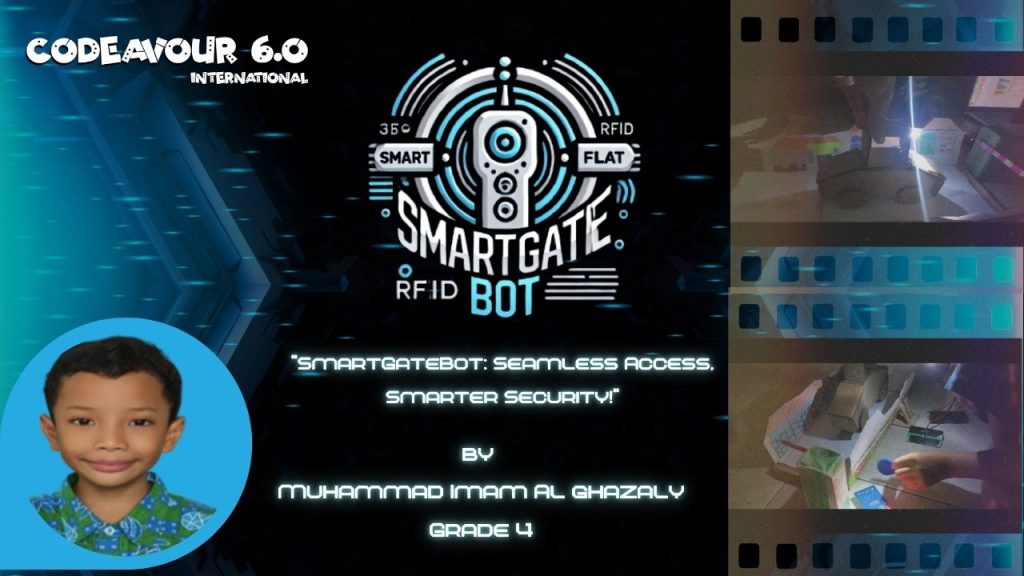
The security system in housing complexes still faces various challenges, one of which is a theft case that occurred in one of the housing blocks, which caused losses of up to tens of millions of rupiah. Apart from that, another problem that often occurs is delays or loss of delivery packages, where packages often pile up at the security post because they are not immediately picked up by residents. With the SmartGateBot, it not only increases the security of gate access through an automation system, but it is also hoped that it can provide automatic notifications via WhatsApp to residents when a package arrives, so that this system can function as a more efficient security and delivery management solution in residential environment. Beyond solving a practical problem, this project embodies the essence of innovation and entrepreneurship. By integrating automation and smart technology, I am creating a modern security solution that can be expanded to other residential areas facing similar challenges.
This project has the potential to evolve into a scalable business opportunity, offering smart access solutions for gated communities, offices, and commercial complexes.
Furthermore, this initiative encourages the adoption of IoT-based smart security systems, contributing to the growing market for home automation. By combining creativity, problem-solving, and technological innovation, this project is more than just an upgrade—it is a step towards smarter, more efficient living while opening doors for new business opportunities.
Sort My Tomato Please
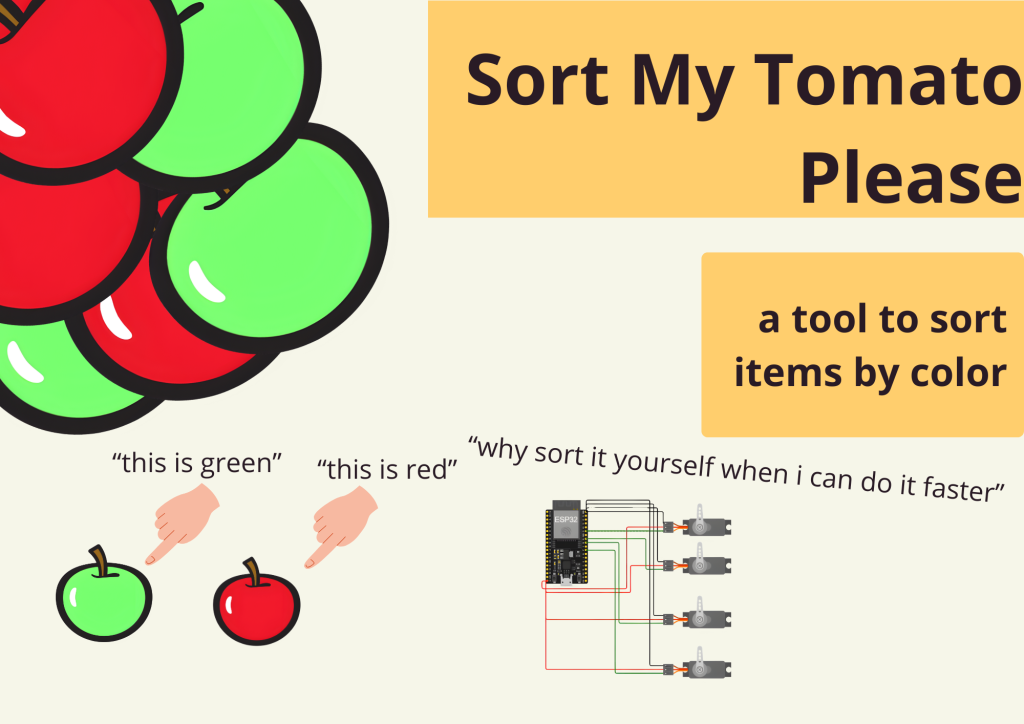
This project is designed to use sensors to detect the color of objects and control the movement of a servo motor through a USP 32 microcontroller. The system employs a color sensor that captures the color of objects placed in its detection range. Once the color is identified, the sensor sends the data to the USP 32, which processes the input and determines the appropriate response based on pre-programmed conditions.
When a specific color is detected, the USP 32 sends a signal to the servo motor, instructing it to perform a designated movement. For example, the servo might rotate to a particular angle, push an object into a designated bin, or sort items based on color. This functionality can be adapted to various applications, such as automated sorting in recycling plants, color-based item organization in warehouses, or educational projects for learning robotics and automation.
The combination of color sensors, USP 32, and servo motors ensures precise and efficient operation. This system is compact, versatile, and programmable, making it suitable for real-world automation tasks. By integrating these technologies, the project provides a practical solution for tasks requiring color recognition and responsive mechanical action.
Vendicine 2.0
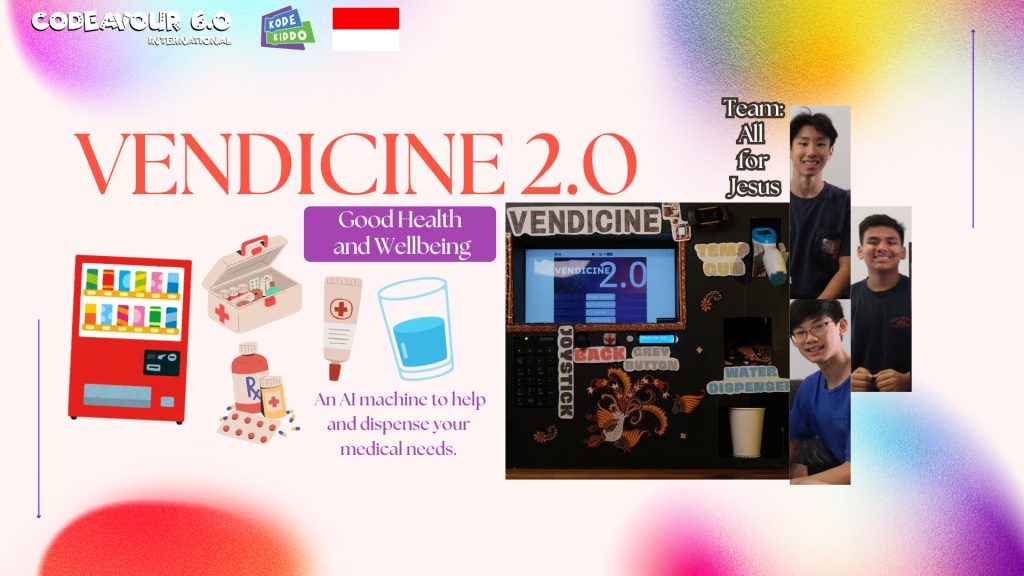
A new and improved version of our AI based pharmaceutical vending machine, which aims to further help give out easy access to healthcare everywhere like dispensing or buying medicines and free clean water. Its capable of analyzing and testing common health problems (fevers, obesity/malnutrition, skin problems, colorblindness, etc) and then providing solutions that correlate with the results of the problem like providing a selection of medical items and dispensing free clean water. Some of the examples are BMI test which detects your BMI and gives advices, or Colorblind test which detects colorblindess and their types. Other features such as Buy Medicine which you can easily buy common Medicines or Water dispenser which dispenses free clean water.
Polucast
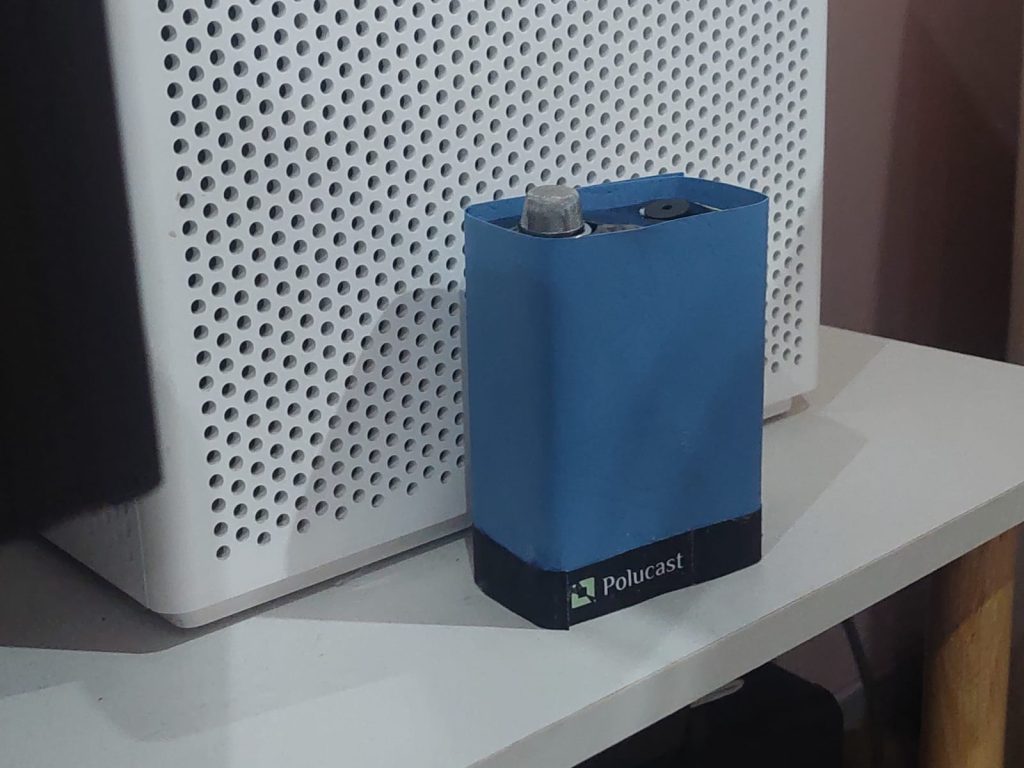
Polucast is an AI-based network designed to monitor air pollution throughout the city. It captures data accurately by connecting all Polucast users together. Unlike traditional air monitoring devices, which are planted and fixed in specific locations, Polucast offers a more flexible solution. By providing a portable, lightweight air quality monitoring, Polucast extends air quality monitoring to rural and underserved areas where no such devices are available.
Polucast’s portable air quality monitoring device can be worn for free while exploring the city. Wherever users go, the device automatically detects their location and monitors the air quality. Collectively, all Polucast devices carried by citizens create a vast network that provides comprehensive information about areas with both poor and healthy air quality. This ensures real-time updates on air quality in public spaces and helps train the AI model to improve predictions based on ongoing monitoring.
Additionally due to direct monitoring, Polucast raises awareness of air pollution among citizens as they travel around the city. If the device detects high concentrations of harmful gases, it will notify the user. Furthermore, if Polucast predicts poor air quality in a particular area, it will notify users and provide recommendations on what actions to take. Users can also access analytics, including data from the past hours or days, current real-time conditions, and future predictions from the system.
